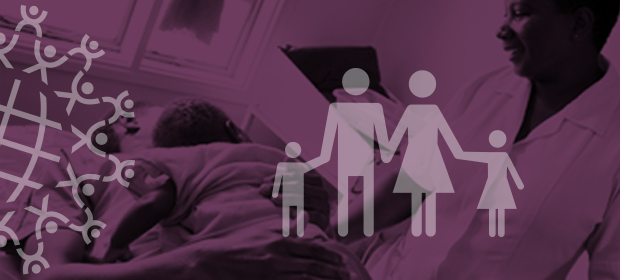Where We Work
See our interactive map


At the 1994 International Conference on Population and Development in Cairo, who could have imagined that technology—especially mobile phones—would eventually become such a viable and crucial tool in reproductive health? Today mHealth holds enormous potential for family planning. Many programs are already harnessing mobile technology to train health workers, connect with clients, and facilitate financial transactions.
Many children today learn how to navigate apps before they can even speak.
At the 2016 International Conference on Family Planning in Indonesia last month, someone asked the question: What changes will we see in family planning 20 years from now? It’s easy to reflect on the progress we’ve made since Cairo, but a bit harder to see into the future. Here are a few thoughts: Digital literacy gaps will disappear
.Even as e- and mHealth emerge as viable ways to train, connect, and serve both family planning clients and health workers, there are still barriers to digital literacy. For health workers, using tablets to collect data is a departure from filling in forms, and figuring out how to use electronic tools, even online tools, is not always instinctive. Twenty years from now, this digital literacy gap will not exist. Many children today learn how to navigate mobile phone apps before they can even speak, and they will be far more tech savvy as adults than the current generation. As mobile phones and other digital tools become ubiquitous, everyone, young and old, will become more comfortable with technology. Today’s youth will harness tomorrow’s wisdom.
One of my favorite quotes from the 2016 International Conference on Family Planning came from a young woman named Kate Baye, who said, “Youth are not future leaders; we are leading now.” As the greatest portion of the demographic pyramid, youth are already emerging as key advocates for family planning. Young people’s belief in and engagement with family planning are crucial for securing their sexual and reproductive rights. Their decisions at this critical age will have an impact on their whole lives. Twenty years from now, the youth of today will be excellent role models for the next generation. And the new wave of young people will be even more informed, empowered, and committed to family planning. Access will be greatly improved.
Many of our global family planning goals are related to access—access to information, access to a range of contraceptive methods, access to health workers. While we may not have solved all of our access problems 20 years from now, I do see a bright future. Better internet and telecommunications will allow more online and mobile access to information for family planning clients and providers. Stronger knowledge management systems (and greater understanding of the role knowledge management plays in family planning programming) will make accessing information easier and more efficient. In 20 years, the extreme shortage of health workers today will be somewhat mitigated. And supply chains for reproductive health commodities will be greatly improved so that “stockout” is a word that never occurs in family planning programs. I’m optimistic about these projections because we are now seeing so many donors and programs support health systems strengthening. Innovative and high-impact activities are strengthening health systems from every angle to help countries meet their own health goals as well as the Sustainable Development Goals. User-centered design and creative thinking will be the norm.
The premise of design thinking is to be iterative, allowing many ideas to come from many discussions with your “users” or “clients.” Design thinking also taps into empathy—really getting to know your users so that your product or activity meets their needs. In the future, I hope to see more creative solutions to family planning problems, such as those we’ve seen in Zambia and Kenya through programs run by IDEO.org and Marie Stopes to design services for adolescents. What came out of these programs was creative and fully-informed by the local audience—nothing we would ever have designed sitting in a meeting room in Washington, DC. The global development community has fallen into a habit of going into countries with our own ways to solve problems. In the next twenty years, innovation and true user-centered design should guide our programs.
Get the latest updates from the blog and eNews




